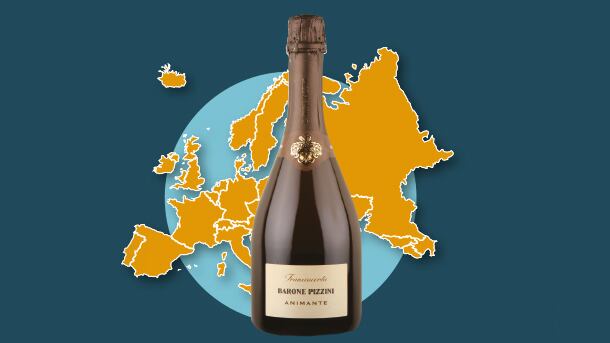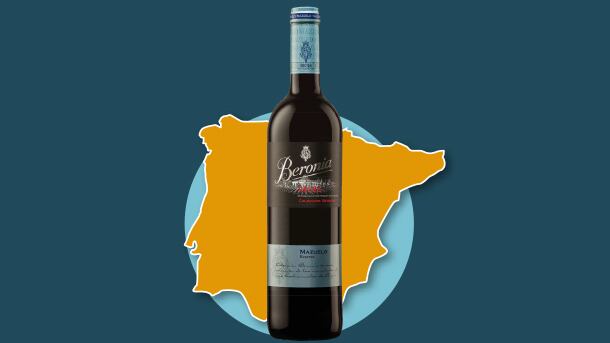his year’s on-trade wine trends could be driven as much by global grape harvests as they are by the taste preferences of British pubgoers.
The 2017 European vintage was exposed to crippling frosts at key points in the growing season and has led to many importers switching to other sources to secure sufficient stocks.
“Europe has had the smallest harvest in living memory,” says Kevin Pollard, head of on-trade at importer Boutinot. “The big three of France, Spain and Italy have had a drop in harvest equiv-alent to the entire production of South America.
“There’s real value in South Africa and, to a certain extent, in Chile and Australia.”
Lower end hit hardest
European fizz

Prosecco’s success as a celebratory alternative to Champagne has led to upward pressure on prices. This has opened the door for other grapes and regions from Italy as value alternatives, says Nick Tatham at CWF, including Passerina, Pinot Grigio, Verdicchio, Pignoletto, Durello – and a blast from the past in the form of Lambrusco. Cava is also being tipped by some in the wine trade for a comeback. Franciacorta, made in the traditional method used for Champagne, offers a more premium option, as does, further afield, the burgeoning English wine scene, which gives pubs the opportunity to champion local products made with the same grapes and on the same type of chalky soil that is found in Champagne.
- Check out: Durello from northern Italy; Cava from Spain; English fizz
Eastern Europe
Several brands and producers are targeting the on-trade with Romanian wines, which offer value alternatives for wine lists where currency and harvest pressures are pushing up prices of wines from more high-profile countries. Bulgaria, Georgia, Moldova and Slovenia are others increasingly on buyers’ radars. Nick Tatham at CWF says: “Wines from Turkey and Greece are also beginning to appear again in the on-trade although in
very limited distribution so far. The Greek Assyrtiko grape is achieving some success as a crisp and cultured dry white especially when sourced from Santorini.”
- Check out: Feteasca Neagra from Romania; Assyrtiko from the Greek island of Santorini; Furmint from Slovenia
The struggling pound has also forced shippers to reassess their sourcing options and has put upward pressure on prices in an on-trade sector where wine is already competing with other categories for market share.
David Gleave, managing director at Liberty Wines, says venues that work harder to build quality lists and great service will win out in such an environment.
“The on-trade market has lost 2m cases of wine in the past three years, but the average selling price per bottle has increased.
“Sales of lower-priced wines have been the hardest hit, but the flight to quality has ensured there is still good growth at the top end.”
Non-Champagne sparkling wine continues to be one of the real bright spots for the on-trade, with volumes up by a third and value sales by 27% in the first-half of last year (CGA).
Availability has again been an issue, with prices of Prosecco, the star performer of the past decade, being pushed up by a mismatch between high demand and availability.
New sparklers
Spain and Portugal

Rioja is still the head honcho in red, but the region faces a stern challenge from rivals such as Priorat and Ribera del Duero. Robin Knapp from Hallgarten says the whites “Godello and Albariño from the coastal north-west of Spain continue to be popular, food-friendly options”. Portugal has long been a wine trade best-kept secret that’s frequently tipped to be on the verge of big things. David Gleave at Liberty says “light whites such as Vinho Verde and supple reds from the Douro make them an attractive proposition for wine lists”.
- Check out: Castelão and Trincaderia from Tejo in southern Portugal; Rias Baixas Albariño; Priorat Garnacha and Mazuelo
That’s creating opportunities for other types of fizz.
“Prosecco will have to become a premium choice and move up a price point,” says Pollard. “Prices have gone up by 10% to 15 % for a lot of our customers. Other sparkling wines are coming in, such as Durello from north-west Italy.”
Nick Tatham MW, wine development manager at Continental Wine & Food (CWF), agrees and adds: “Spanish producers are also experimenting with new tank-fermented sparkling wines to try to steal some of the sector from the Italians.”
In still wine, CWF is among a number of companies bigging up Eastern Europe where crops have not been so hard hit and that offers variety and decent
quality at keen prices.
Dan Harwood, head of wine education for Halewood Wines & Spirits, says his company’s Romanian sales almost doubled in the second half of last year driven by “consumers’ desire to find something new and exciting away from the standard go-to wine regions”.
Top 10 improvers
South America

Argentine Malbec has become a go-to country/region combination for a lot of UK on-trade wine drinkers: big enough to stand up to a steak, accessible enough to drink on its own. Chile, South Africa and southern France wines are being talked up as alternative sources of the grape but for now Malbec remains very much Argentina’s hot property. In contrast, Chile’s big USP is its regional and varietal diversity. Its winemakers are strong on getting the best out of their terroir, meaning it offers dependable wines at a range of price points.
- Check out: Argentine Malbec; Chilean Viognier and cool climate Chardonnay or Sauvignon Blanc
Italy and New Zealand were the only two of the top-10-selling on-trade countries to see a climb in sales in the first half of 2017, driven by the continued buoyancy of Pinot Grigio and Marlborough Sauvignon Blanc.
“Pinot Grigio has plateaued,” suggests Pollard at Boutinot. “In Italy, Gavi has stepped in. It’s easy to say and as Pinot Grigio drinkers are getting a bit older, they’re becoming more sophisticated in their tastes.
“Kiwi Sauvignon is really successful but we’ve got large demand for South African Sauvignon because the quality is there and the pound’s very strong against the rand.”
A broader consumer interest in provenance is also influencing wine sales, with vegan wines – that don’t use animal-derived products as clarifying agents – getting a lot of hype.
Robin Knapp, regional sales director of Hallgarten Wines, notes that “organic, biodynamic and wines made using sustainable practices are increasingly commonplace on wine lists”.
South Africa

The global winds of geography and economics are blowing in favour of South African wine in the UK market. Buyers are being drawn by falling prices versus other major producing countries, as a result of Brexit-driven pressure on the pound against the euro and the dollar. None of which is to suggest that the country is just a cheap, fallback option. Producers like Mullineux, Paul Cluver and Vergelegen offer great quality at premium price points that don’t require a second mortgage.
- Check out: Chenin Blanc whites; Cabernet Sauvignon reds; Syrah/Shiraz is starting to shine
Wider drinks category trends are also influencing the look of wines on the back bar.
“The wine trade has been slow to catch up with spirits and beer,” says Pollard at Boutinot. “But, in the age of Instagram and Twitter, people are looking for more modern labels. A classic bottle with italic font doesn’t really do that.”
Will Oatley, managing director of Louis Latour Agencies, says labels on the Wakefield wines from Australia that it imports are a sign of the future. A sensor on both reds and whites changes colour when the optimum serving temperature is reached.
“Consumers buy with their eyes,” he says. “Creativity and innovation will continue to be a kingpin in packaging.”
New Zealand

It’s less than 50 years since the first Sauvignon Blanc grapes were planted in New Zealand’s Marlborough region and the past decade has seen it become one of the favourite white wine styles in the UK. Relatively high bottle prices mean that it ranks alongside Italian Pinot Grigio in value sales in the on-trade, though it still has some catching up to do in volume. There’s been a mini backlash against Marlborough’s in-your-face gooseberry style of Sauvignon, and South Africa and cooler climate regions of Australia sometimes offer more elegant alternatives. New Zealand reds from other regions are also making their mark.
- Check out: Central Otago Pinot Noir reds; Marlborough Sauvignon; Hawke’s Bay red blends
